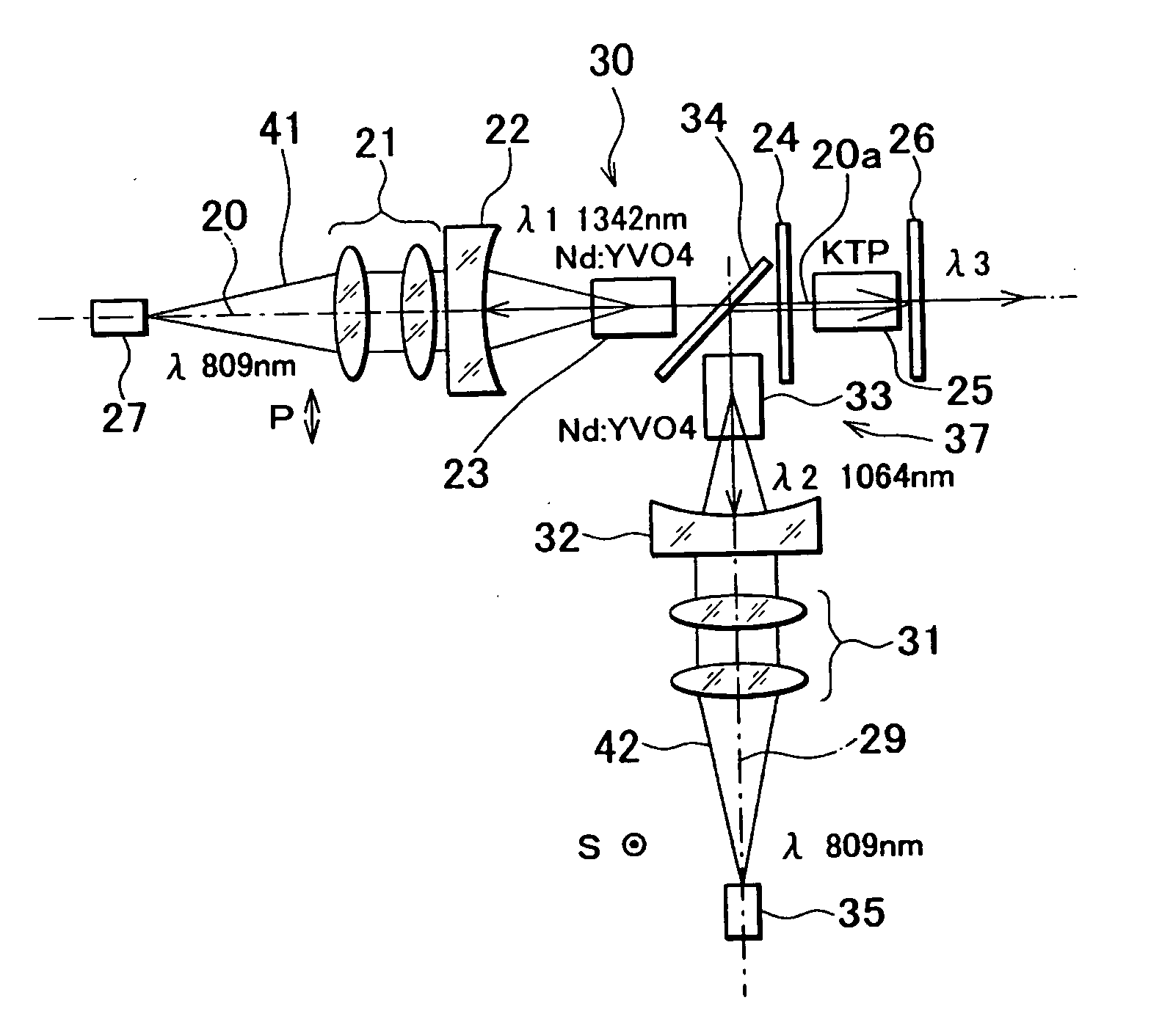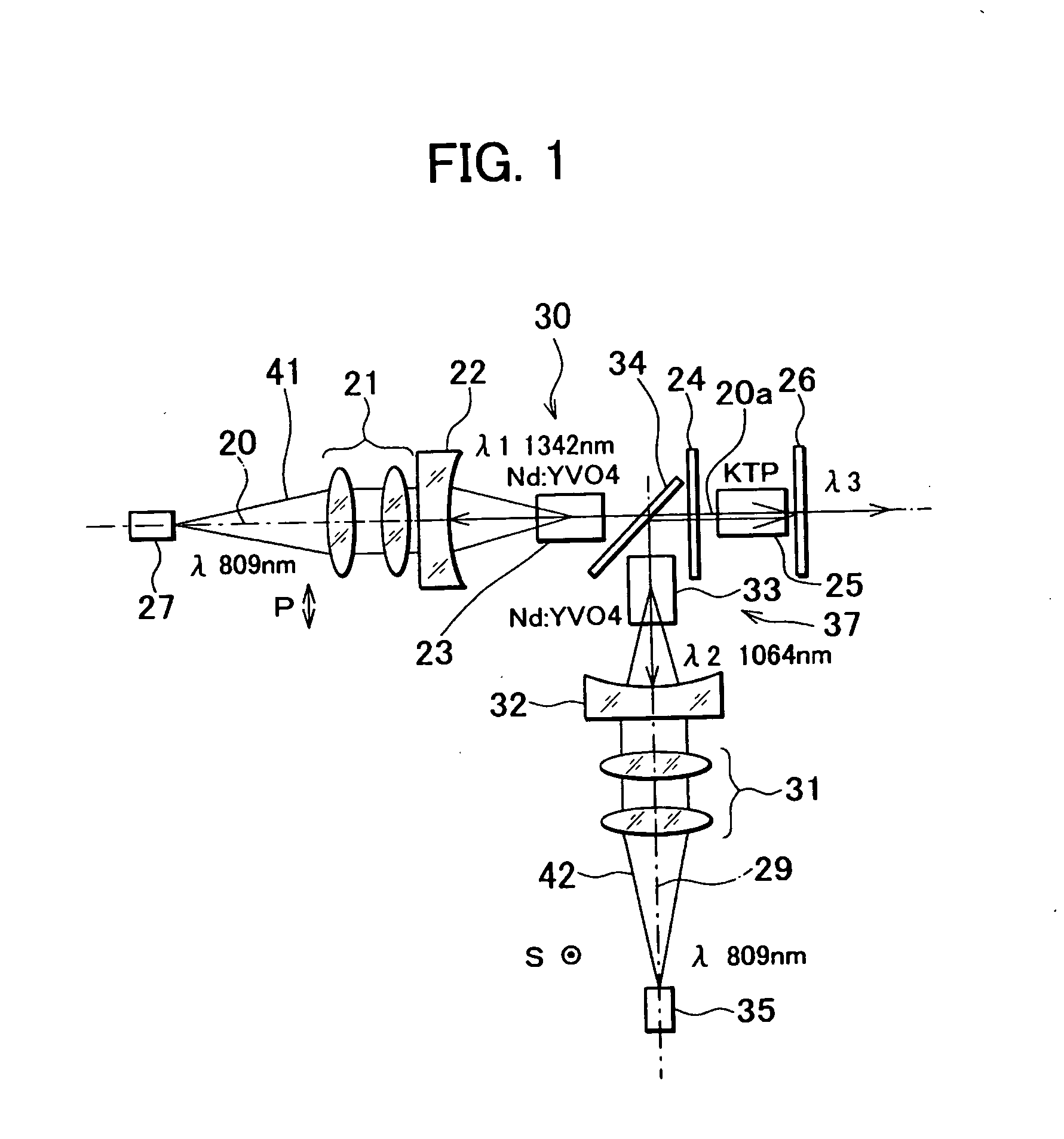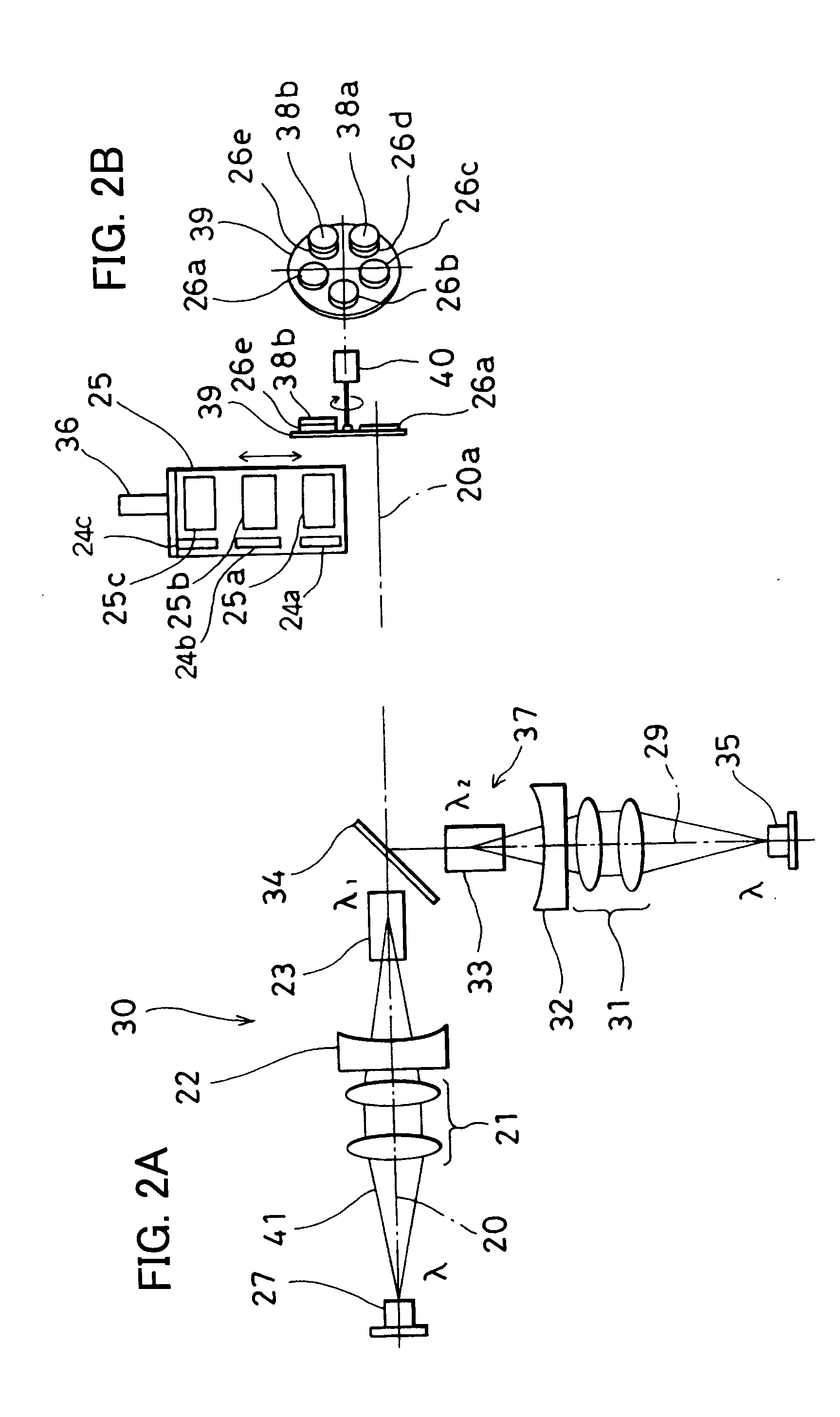Solid-state laser device
a laser device and solid-state technology, applied in the field of solid-state laser devices, can solve the problems of large system size, complicated device mechanism, and need for more complicated structure, and achieve the effects of high accuracy, simple mechanism production, and high accuracy
- Summary
- Abstract
- Description
- Claims
- Application Information
AI Technical Summary
Benefits of technology
Problems solved by technology
Method used
Image
Examples
first embodiment
[0065] Next, description will be given on the invention having the basic optical system as given above by referring to FIG. 2 to FIG. 5.
[0066]FIG. 2 shows basic arrangement of the first embodiment. In FIG. 2, the same component as shown in FIG. 1 is referred by the same symbol, and detailed description is not given here.
[0067] The wavelength conversion unit 25 is supported by a wavelength converting means 36. The wavelength converting means 36 can move the wavelength conversion unit 25 in a direction perpendicular to the commonly used optical axis portion 20a. Optical crystals 25a, 25b and 25c for wavelength conversion can be individually positioned on the commonly used optical axis portion 20a. When the optical crystal 25a for wavelength conversion is positioned on the commonly used optical axis portion 20a while the first fundamental wave and the second fundamental wave are oscillated, the sum frequency SFM is oscillated. When the optical crystal 25b for wavelength conversion is ...
second embodiment
[0088] Referring to FIG. 6 and FIG. 7, description will be given below on the invention.
[0089] In FIG. 6 and FIG. 7, the same component as shown in FIG. 2 to FIG. 5 is referred by the same symbol, and detailed description is not given here.
[0090] In the second embodiment, the output mirror 26 and the intermediate mirror 24 are incorporated in the wavelength conversion unit 25. It is designed in such manner that the optical crystal of the wavelength conversion unit 25 is switched over by the wavelength switching means 36, and that the output mirror 26 and the intermediate mirror 24 are switched over integrally with the optical crystals for wavelength conversion.
[0091] The wavelength conversion unit 25 comprises optical crystals 25a, 25b and 25c for wavelength conversion and also comprises individual output mirrors 26a, 26b, 26c, 26d and 26e to match the types of the projected laser beams. There are provided individual output mirrors 26a, 26b and 26c on exit sides of the laser beams...
third embodiment
[0104]FIG. 8 shows the invention. In FIG. 8, the same component as shown in FIG. 7 is referred by the same symbol, and detailed description is not given here.
[0105] In the third embodiment, the Q-SW element 38 is incorporated in the basic optical system. The Q-SW element 38 is provided between the intermediate mirror 24 and the polarization beam splitter 34 on the commonly used optical axis portion 20a.
[0106] When the optical crystal 25a for wavelength conversion is positioned on the commonly used optical axis portion 20a and the LD light emitters 27 and 35 are turned on at the same time, a pulsed laser beam of SFM is projected. When the optical crystal 25b for wavelength conversion is positioned on the commonly used optical axis portion 20a, and only the LD light emitter 27 is turned on, a pulsed laser beam converted to SHG1 is projected. When the optical crystal 25c for wavelength conversion is positioned on the commonly used optical axis portion 20a and only the LD light emitter...
PUM
 Login to View More
Login to View More Abstract
Description
Claims
Application Information
 Login to View More
Login to View More - R&D
- Intellectual Property
- Life Sciences
- Materials
- Tech Scout
- Unparalleled Data Quality
- Higher Quality Content
- 60% Fewer Hallucinations
Browse by: Latest US Patents, China's latest patents, Technical Efficacy Thesaurus, Application Domain, Technology Topic, Popular Technical Reports.
© 2025 PatSnap. All rights reserved.Legal|Privacy policy|Modern Slavery Act Transparency Statement|Sitemap|About US| Contact US: help@patsnap.com



